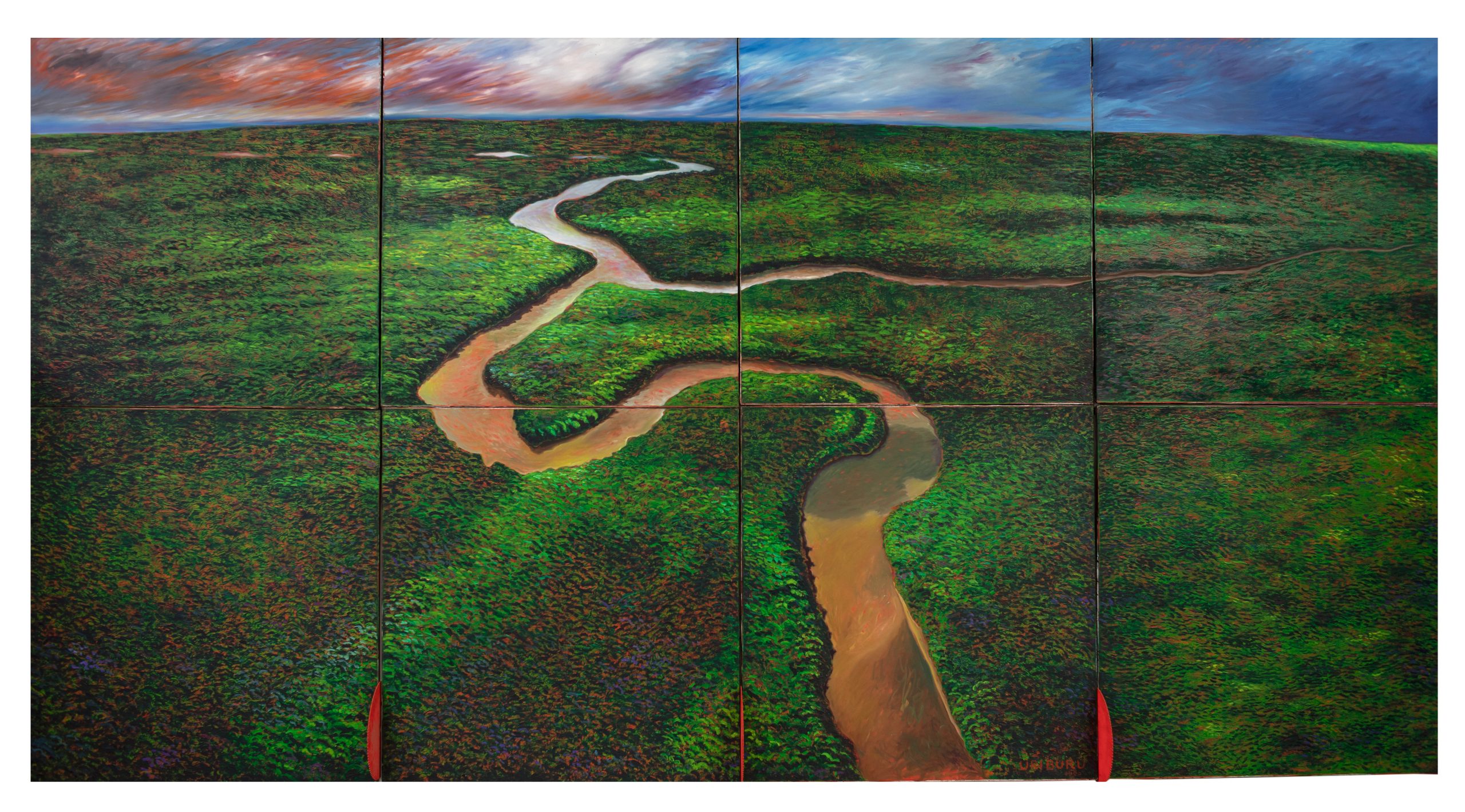Buenos Aires, 1937 – 2016
Nicolás García Uriburu was born in Buenos Aires in 1937. He studied architecture at the University of Buenos Aires, at the same time that he developed his artistic production. In 1954 he held his first solo exhibition of paintings at the Müller Gallery and in 1960 he exhibited at the Lirolay Gallery.
In 1965 he received the Braque Prize and, together with his wife, moved to Paris, where they lived for some time. In 1968 he won the Grand Prize at the National Salon of Plastic Arts, with The Three Graces, a work that approaches pop aesthetics. That same year, at the Iris Clert Gallery in Paris, he presented the exhibition entitled Prototypes for an artificial garden, an installation with animals and acrylic plants. On June 19 1968, within the framework of the Venice Biennial, Uriburu carried out his first intervention in nature, coloring the waters of the Grand Canal with fluorescein green (a harmless fluorescent sodium used by NASA). This intervention marks the beginning of a series of actions carried out by the artist, against water pollution, developed later in rivers at New York, Paris and Buenos Aires and in fountains and ports around the world. He also makes a series of paintings in which he represents endangered species, landscapes and South American animals. In 1981, together with the German artist Joseph Beuys, he colored the Rhine and planted 7,000 oaks during Documenta 7 in Kassel. In 1982 he plants 50,000 trees in the streets of Buenos Aires, an action that he will repeat several times. In the 80s he painted the Buenos Aires myths: Eva Perón, Carlos Gardel and the Virgin of Luján. In 1993 he presented Utopia del Sur, an individual exhibition, at the Ruth Benzacar gallery in Buenos Aires. Uriburu is a founding member of Grupo Bosque, with which he participated in the reforestation campaigns in Maldonado, Uruguay, and has participated in joint actions with the Greenpeace organization. Currently the Uriburu Foundation, is responsible for disseminating the art of indigenous people and the work of the artist.


 García Uriburu Nicolás
García Uriburu Nicolás